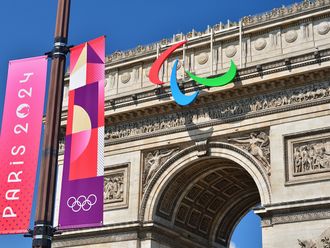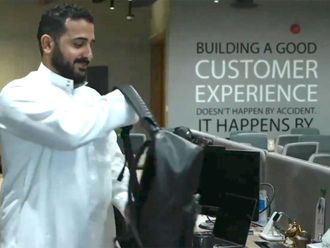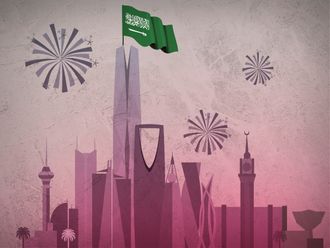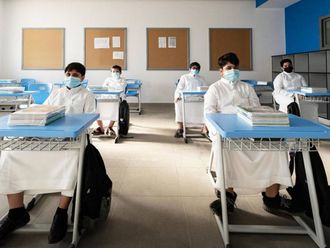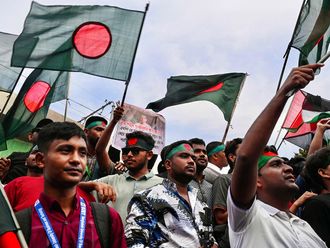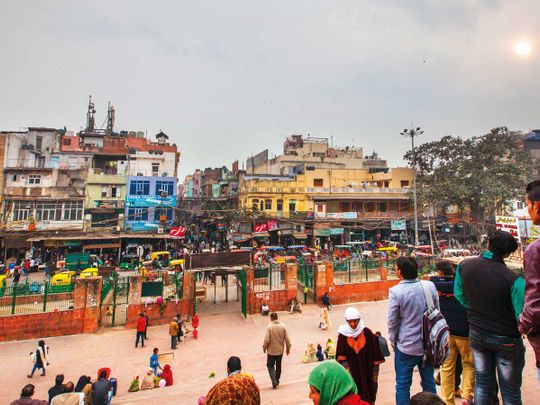
New Delhi: New Delhi and Old Delhi are two faces of the same coin. However, over the decades, the former has transformed drastically. And even though the trimmings of modern life have also seeped into the latter, it is amazing to find how some ancient professions still survive, with each one having a story of its own.
The onslaught of the crowds and the traffic chaos notwithstanding, the roadside scenario is interesting. From a dentist to an antique coins seller, and from a hakim (physician using traditional medicines) to a man sprinkling water from a mashak (goat skin bag), all have continued to survive in the once resplendent Walled City.
Gulf News takes a closer look at the centuries' old traditional ways of living that fascinate both national and international tourists in the city.
FEELING THE PULSE
Seated behind his desk, hakim JK Garg is examining a patient and checking his pulse. Hakims have practised in Old Delhi for more than 400 years. The onslaught of modernity has taken a toll on this profession too, but for Garg, it’s a way of life. He sits in the backdrop of containers filled with powders and pills.
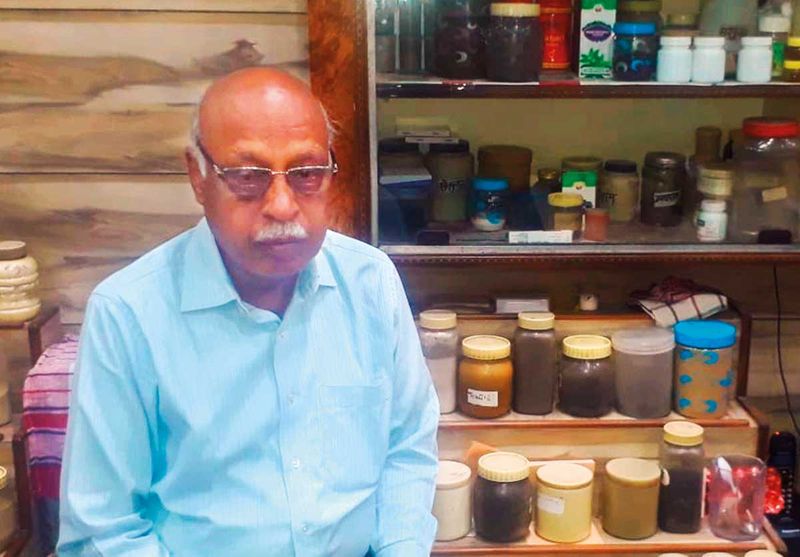
His clinic named Pracheen Ayurvedic Unani Dawakhana in the Sadar Bazar area has been running from the same premises for over a century. “Four generations of the family have willingly opted for this profession,” he boasts.
A patient approaches Garg. The hakim goes into the root of the problem inquiring about his lifestyle and symptoms that trigger the pain. He later explains, “According to the Unani medicine, through the four elements — the heart, brain, liver and kidney we diagnose and decipher the cause of the patient’s medical issue.”
After doing a thorough diagnosis — checking the vibrations of the patient’s pulse, he is able to identify the problem and prescribes a natural remedy of herbs and roots to restore the body’s balance.
This is the Old Delhi of today.
Despite Metro Rail having speeded into the lives of the residents of this part of the city, the long-standing traditions still continue to allure the conventional and the needy.
THE HISTORIC ‘MASHAK’
The area near Gate Number 1 of Jama Masjid is being sprayed with water using a mashak. Though Shahnawaz takes up sundry jobs to earn a living, his main profession for several generations has been to sell water and quench the thirst of people in the bylanes of Chandni Chowk.
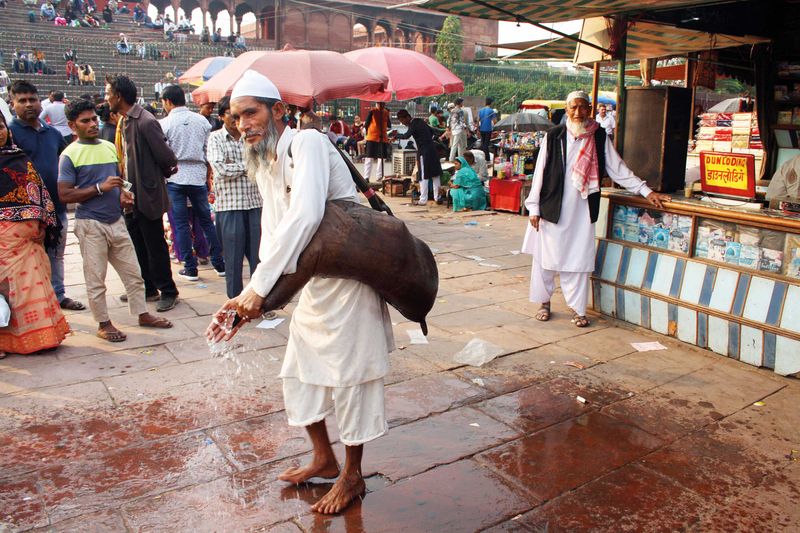
Shahnawaz says: “Centuries ago, numerous water sellers roamed about the streets carrying cold water filled mashaks. Even though a street known as Sakke Wali Gali that housed the community, which survived on the profession still exists, the descendants have taken up other lucrative professions.”
The 65-year-old, however, has not given up. “Even my two sons continue to draw water and fill the mashaks from the nearby well, which is over 500-years old. But there are not many takers for mashak water, as people now prefer bottled water. It is only out of curiosity that some people approach us to have the feel of the days gone by,” he rues.
A number of long leathery bags hang from metal hooks as if exhibited in a museum! Shahnawaz cannot tell exactly how old the mashaks are. “Since it was a hereditary occupation, the mashaks could be from the times of the Mughal kings,” he shares. “We have them mended if there’s a leakage,” he adds.
PAVEMENT DENTIST
To those who are concerned even about a perfect smile and opt for dentists keeping up with the latest in technology and state-of-the-art equipment, Rajendra Singh’s dentistry near Lahori Gate could come as a shocker.
Sitting cross-legged on the floor, surrounded by a number of plastic bottles containing a variety of lotions, potions and a long chisel, Singh waits for the customers. Occasionally, some passers-by greet him, giving testimony to the fact that his business of tooth fitting and extracting has been on for quite some time.
Singh corrects, “I began assisting my father when I was just 12 years old. The fascination for the profession led me to give up studies and I picked up the tools of the trade. After over two decades, my enthusiasm for work has not dimmed.”
Societal changes have altered how dentistry is perceived today and Singh’s patients now are only poor labourers and rickshaw pullers who cannot afford a conventional dentist. Nonetheless, he is content operating from the dusty stretch of the pavement and the makeshift procedure of settling down to work every day.
STREET SIDE BANKER
At another corner in Chandni Chowk, spread out on a plastic sheet is a collector’s treasure. The coin collection of Majid provides India’s history of invasion, destruction and colonisation. From the Mughal era to the British rule and from India’s Independence to the extinct of princely states, around a thousand coins reflect the times gone by.
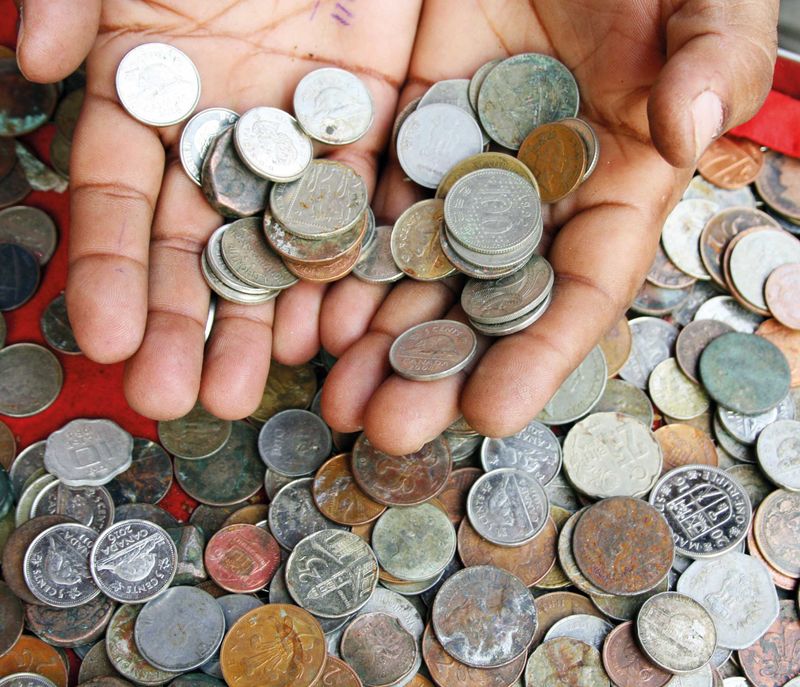
Majid states, “Not just that, the collection includes coins from several countries including France, USSR, South Africa and Egypt.”
“Many people come asking for exorbitant prices for the coins that are actually ‘junk’ for them. Since no one accepts these coins in the market, they finally give it to us and we generally pay them between Rs5 to Rs50 for each coin. These are sold to the collectors after a lot of bargain, as we too have to make a profit,” he says.
Though not well educated, Majid goes through old history books to find out the genuineness of the coins. “I cross-check the name of the ruler and the year mentioned on the coins. This occupation has made me aware of a lot of facts from history. The rare coins are a prized catch and on some days I am able to draw a good bargain,” he discloses.



